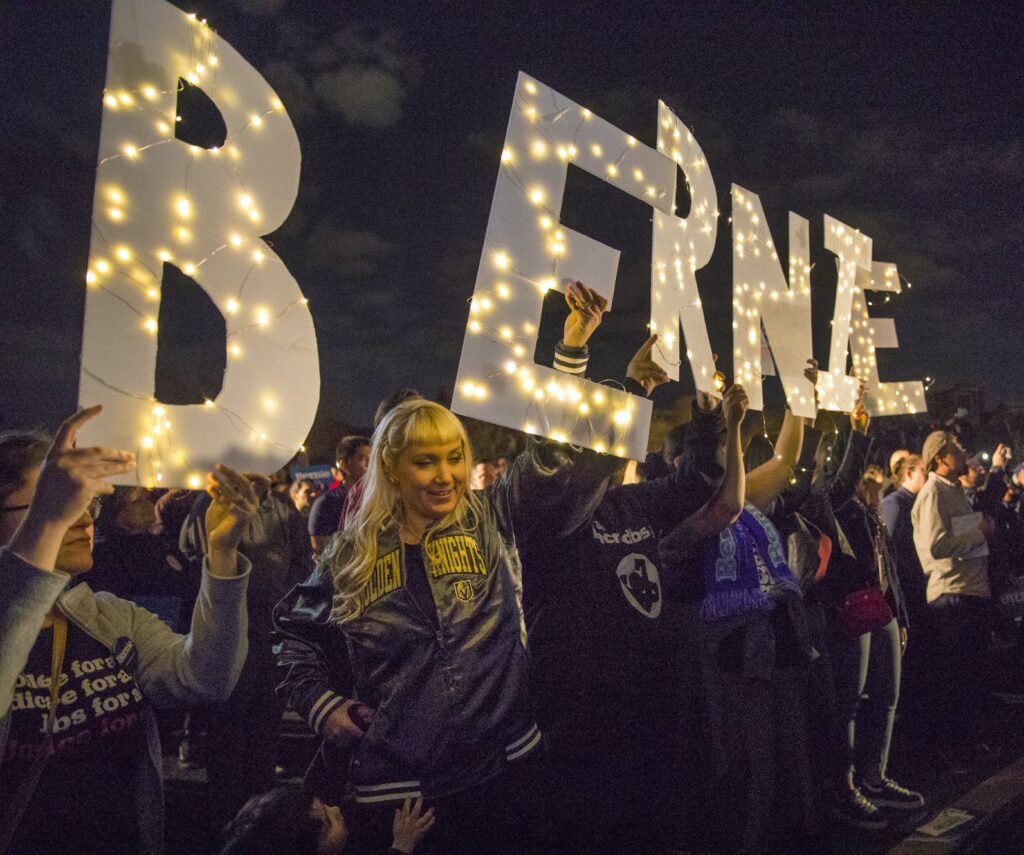Smart, early organizing in communities of color helped propel Sanders to victory in Nevada
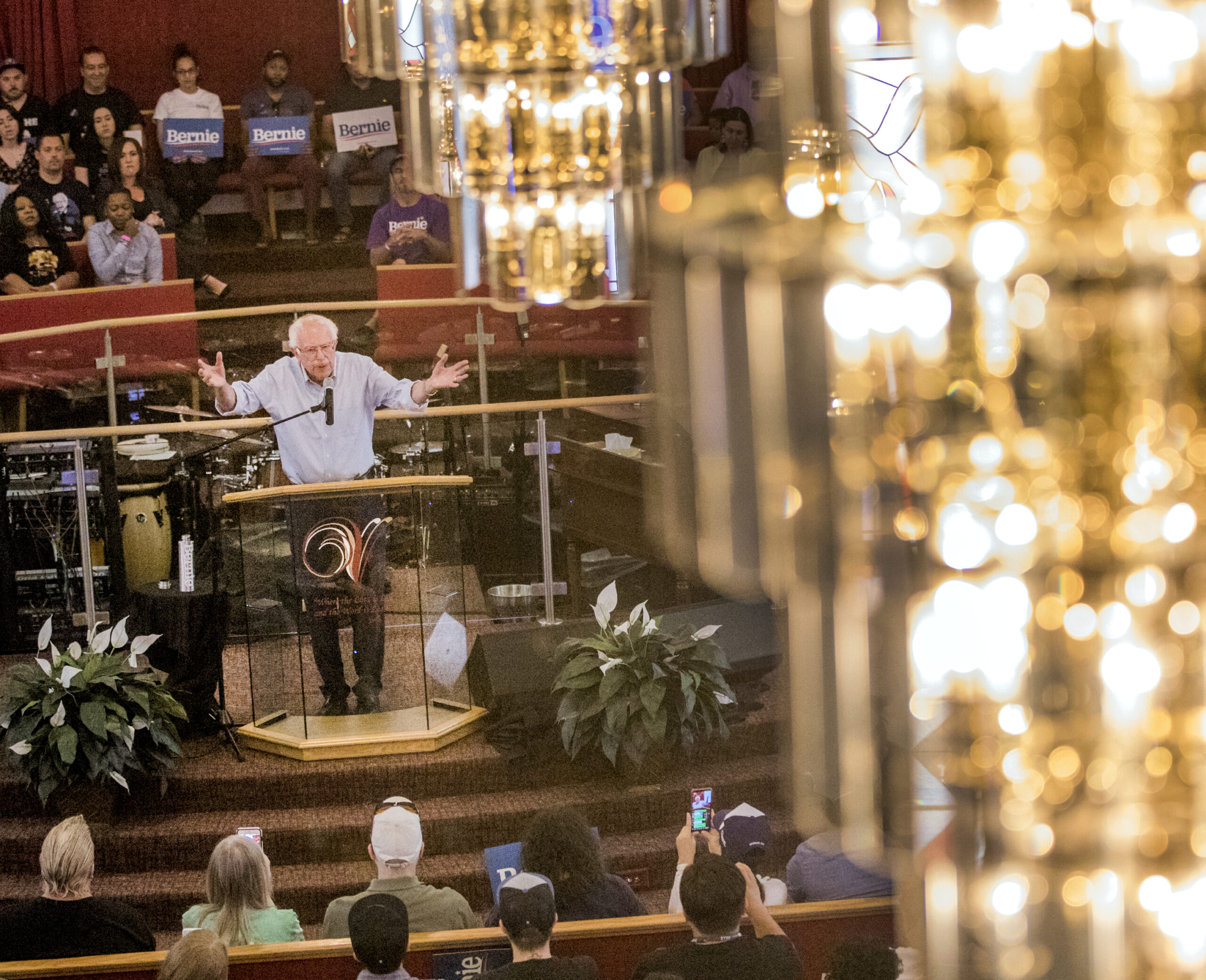
As the politically powerful Culinary Union warned that Bernie Sanders would “end'' their union health care if elected president, the Vermont senator’s campaign was quietly canvassing their rank-and-file membership.
In the three weeks leading up to Saturday’s Democratic presidential nominating contest in Nevada, a team of a couple dozen organizers fanned out across the Las Vegas Strip to properties where casino workers unable to leave work to caucus would be able to participate at at-large precincts while on shift, including the Bellagio, Harrah’s, Mandalay Bay, Paris, Park MGM, the Rio and Wynn.
The Sanders campaign had been courting the predominantly immigrant, working-class Culinary members at their homes — knocking on their doors, sending mailers, calling them and running ads on their TVs — for months. But in the home stretch, the campaign took its final pitch right to the employee entrances of the hotels where workers would be able to caucus. It was a strategy adapted from the campaign’s successful efforts organizing immigrant meatpackers in Iowa.
“A lot of people are busy, they're coming into work or they're leaving and trying to get home,” said Sarah Michelsen, Sanders’ state director. “But they would stop and have conversations with us because they were like, ‘What are you doing here? Why are you standing in the parking garage?’”
They talked about health care, sure. The union opposes Sanders’ Medicare-for-all plan on the basis that it would replace their members’ much-loved health insurance with a government-run system they fear wouldn’t provide as good of benefits as their gold-standard plan. But campaign organizers also talked about the Vermont senator’s plans to provide free college for all, address climate change and bolster unions.
The campaign had no idea whether their organizing efforts would work, especially with the union actively circulating anti-Sanders flyers. Heading into Saturday’s caucus, the campaign’s only hope was that Sanders would receive at least 15 percent support in each of the seven at-large Strip precincts, which would qualify him for delegates to the county convention out of those sites.
Sanders ended up winning five of the seven Strip precincts, not only suggesting that rank-and-file Culinary members rejected their union’s messaging on Sanders but that an overwhelmingly female, multi-racial group of voters was able to get behind his ambitious, progressive agenda. It also proved how effective the campaign’s leave-no-stone-unturned approach to organizing in historically underrepresented, low-turnout communities could be.
“This was the chance to really create that narrative and really prove that theory of the case,” Michelsen said. “We knew that this was going to be a really very important piece of the momentum that we needed to build to win.”
And win in Nevada he did. Sanders emerged from Saturday’s caucus not only with 46.8 percent support but a 26 percentage point lead over his next closest competitor, former Vice President Joe Biden. Political observers in Nevada anticipated a Sanders win, but they didn’t anticipate exactly how much he would win by.
“He ended up running away with it,” said Laura Martin, the executive director of the Progressive Leadership Alliance of Nevada.
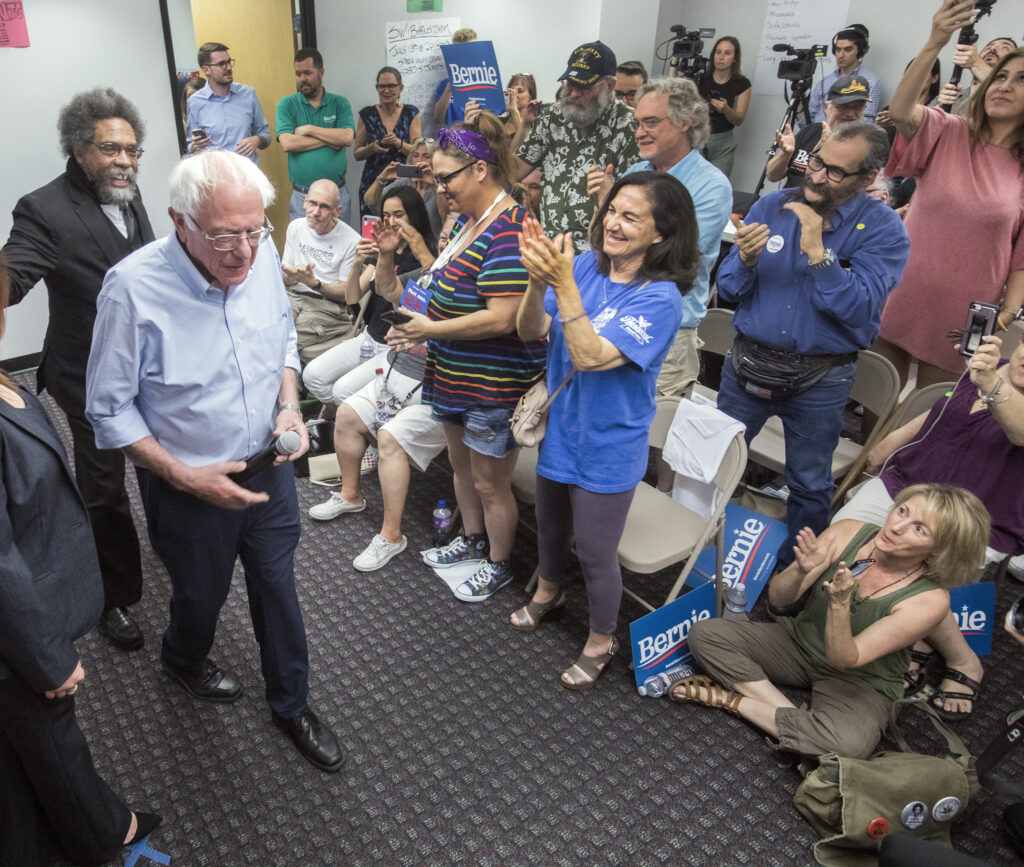
The Sanders organization
For the Sanders campaign, there was no complex calculus about where to devote resources ahead of Nevada’s caucus. Where other campaigns had to be strategic about where they spent their time and money, Sanders, who raised $25.2 million in the last fundraising quarter, could afford to be and spend everywhere. The campaign began staffing up in Nevada in March and had more than 250 staffers on the ground by Caucus Day, outnumbering the next-biggest presidential campaign team by nearly two to one.
“One thing that's up that's a major trap about a caucus is people end up twisting themselves up, trying to figure out the puzzle and the strategy of all of it,” said Peter Koltak, a senior adviser to the campaign. “At some point it's like if you hit hard everywhere, then you're going to win.”
But there was at least some logic to it. For instance, the campaign deployed what Michelsen described as a full “Election Day-style turnout mechanism” for each of the four days of early voting last week ahead of the caucus. That included hosting get-out-the-vote events in both Northern and Southern Nevada, including a “Unidos con Bernie” soccer tournament in East Las Vegas, and then giving supporters rides to the polls.
“We made a Bernie trophy for them and then we drove them to the polls,” Michelsen said. “It was a community event that felt natural to them in the way that they normally gather, and then they got to have the exciting civic experience of voting together as a community during the early vote.”
In total, the campaign estimates that it gave dozens of rides to voters, including from five mosques, the popular Filipino supermarket Seafood City, and the popular Latino supermarket Cardenas Market.
The success of that final get-out-the-caucus effort was, in part, predicated on the time and money spent on a massive field organizing effort — what Michelsen referred to as the “sweat equity” of the campaign — that knocked a half million doors between when it started in June and Caucus Day.
“People recognize that and they see that when they've seen you at their door multiple times, when they're used to getting your literature on their door, when you've called them over and over, when you're starting to get to know them,” Michelsen said.
They also engaged in an extensive relational organizing effort, a hub-and-spoke strategy where Sanders supporters reached out to their personal networks and used their social capital to persuade friends and family members to caucus for the Vermont senator. That effort, campaign aides believe, proved particularly critical to Sanders’ successes among voters of color. Entrance polls show that Sanders won 51 percent of voters who identify as Hispanic or Latino and 27 percent of voters who identify as black.
“What is often forgotten is that particularly in Latino communities and communities of color, the networks are very strong, the family bonds,” said Susana Cervantes, Sanders’ field director in Nevada. “It just comes down to finding supporters and then asking them to talk to their friends, family and neighbors. I know it sounds simple, but that's what it comes down to.”
Even operatives working on rival campaigns were impressed by the Sanders operation.
"I can say without a doubt they were the only campaign that really took the hashtag #WeMatter seriously,” said Megan Jones, a longtime political consultant in Nevada who worked on California Sen. Kamala Harris’s campaign. “They were invested deeply in all parts of the communities that they were organizing in.”
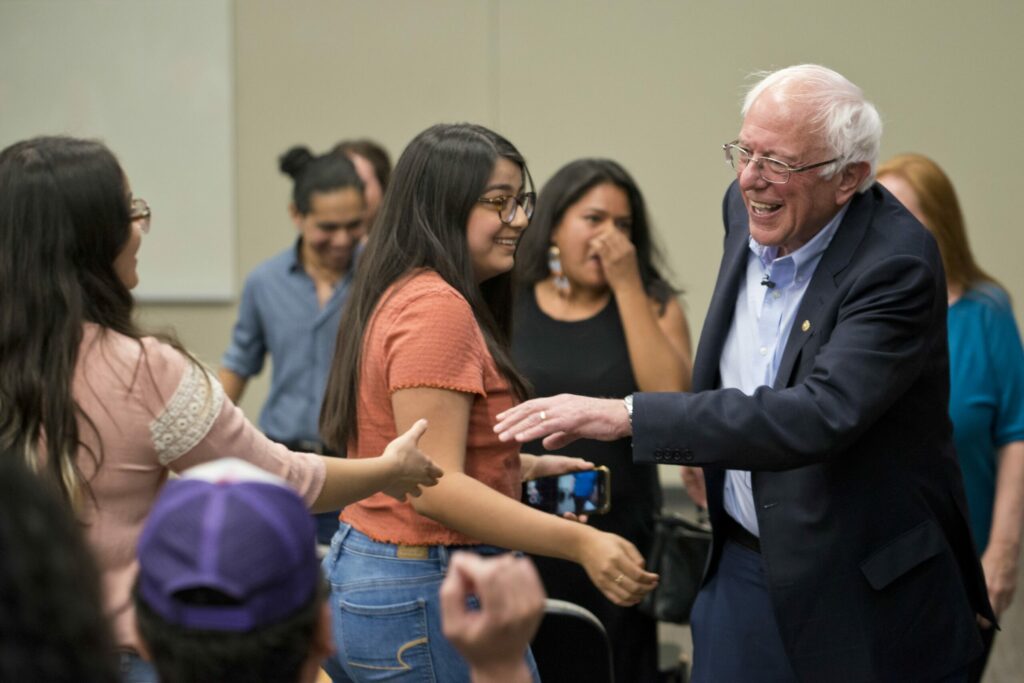
Courting communities of color
While Biden bested Sanders among black voters, no other candidate came close to approaching the level of support that Sanders — nicknamed Tío Bernie, or Uncle Bernie — received from Latino voters. Precinct-level data also show that he was by far the most popular candidate in the predominantly Latino neighborhoods in East Las Vegas, which is also where Sanders opened his first campaign office in July.
The campaign attributes those successes, in part, to young Latino supporters winning over their parents and grandparents.
“The first generation depends on their kids who are growing up here to help them. You grow up having influence and your parents listen to you because they depend on you,” Cervantes said. “It's very powerful to have all this youth behind us, especially in the Latino community.”
Cecia Alvarado, state director for the Latino voting rights organization Mi Familia Vota, said that Sanders was able to appeal to the Latino community in a deep and authentic way that other candidates were not. She also noted the way that he strategically used surrogates to boost his campaign — and not just Rep. Alexandria Ocasio-Cortez, who hosted a Spanish-language town hall for Sanders in Las Vegas in December, but also José La Luz, a Puerto Rican labor activist who attended several events on Sanders’ behalf in Las Vegas this week.
“The lack of investment in our community has shown in the past, always,” Alvarado said. “I think with Senator Sanders campaign we learned when you invest in the Latino community, when you are talking with Latinos about immigration, about health care, they show up.”
But the Sanders campaign didn’t reserve that level of investment just for the Latino community, though. Nine months ago, Miles Cooper, a political associate on Sanders campaign, and physician Zaffar Iqbal launched “Muslims for Bernie.” The group, which met on Sundays, focused on how to pitch Sanders’ message with a level of cultural fluency to Muslims, who make up less than 1 percent of the state’s population, that non-Muslims wouldn’t have.
“They did a lot of mosque visits, going to mosques at prayer time and reminding people about when they can vote, how they can vote,” Michelsen said. “It's different than if we just tabled at the mosque the week before the election.”
The campaign also spent time getting to know local issues and using Sanders’ platform to draw attention to them, particularly within Indigenous communities, who make up nearly 2 percent of the state’s population. The Sanders campaign released a video in May highlighting Native concerns over the possible construction of a long-term high-level nuclear waste repository at Yucca Mountain, and after meeting with tribal leaders after a campaign stop in Elko in December, Sanders came out against oil and gas drilling in the Ruby Mountains.
“It nets votes because people understand that it's real. If campaigns are super slick and are all about paid media and are all about the most poll-tested messaging, people can smell bullshit from a mile away,” Michelsen said. “We didn't meet every native American voter, but those are strong family networks too, and they could see the work that we were doing from the beginning.”
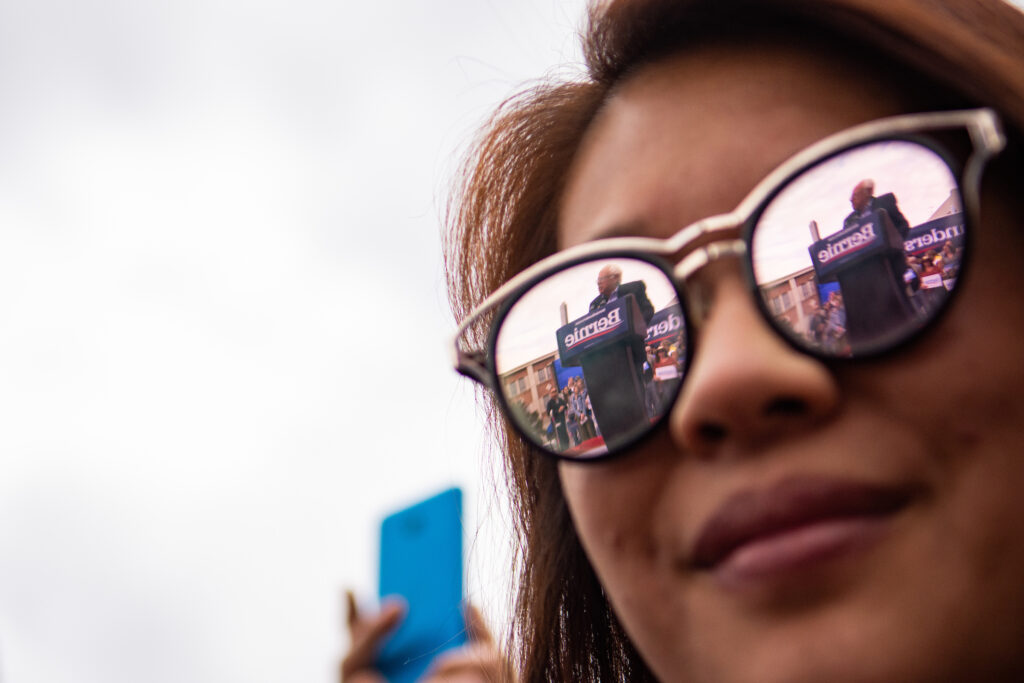
Media and momentum
It wasn’t just smart organizing, either. The campaign also undertook a substantial paid media campaign that included sending mail to Latino households beginning in the late summer and continuing through February, as well as a digital campaign targeting all of the campaign’s audiences beginning in late November. According to The New York Times, Sanders spent about $407,000 just on Spanish-language ads in Nevada.
“We just sort of never said anything about it because we wanted to kind of fly under the radar with how aggressively we were coming on,” Koltak said. “By the time that we actually got to the TV wars, we'd actually already been communicating with people, both from an organizing perspective and a paid media perspective for a really long time.”
Of course, the momentum out of Iowa and New Hampshire helped Sanders here too. The Vermont senator won the popular votes in both states, with former South Bend Mayor Pete Buttigieg close on his heels. But Nevada represented his first substantial margin of victory, separating him from what has been a crowded pack of Democratic presidential hopefuls over the course of the race.
“I used to joke with people like, we’re third and we’ll be ready for the handoff. What you hand us off is up to you,” Koltak said. “Luckily they handed us off a campaign with a little momentum coming out of Iowa and New Hampshire, and then because of the work we had already put in here and the demographics of the state and a variety of other factors, we were ready to take that and blow it up.”
And unlike many of his competitors, Sanders wasn’t starting from scratch in this Democratic presidential race. In fact, he only lost Nevada to Hillary Clinton by 5 percentage points in 2016, a far closer race than anyone had anticipated and positioning him well for this year’s contest.
“He has had time for his message to percolate since 2016,” said Annette Magnus, executive director of Battle Born Progress. “In 2016, people didn’t know who he was. Since 2016, he has been on the scene, he’s a known commodity, people understand what he’s talking about.”
But those who watch politics closely in the Silver State note that his message has a particular resonance and urgency now in a way that it didn’t four years ago, before Donald Trump became president. Clark County Democratic Party Chair Donna West pointed in particular to the issue of health care and the Trump administration’s efforts to dismantle the Affordable Care Act compared to Sanders’ Medicare-for-all policy.
“We’ve seen such a deterioration of the ACA and the attacks on it. There’s so much fear there about people having to pay more or losing coverage or knowing they or a loved one has a pre-existing condition and not having health insurance,” West said. “That message just comes on so strong, and I think it really resonated here.”
The question now is how that message will resonate through the rest of the nominating contests and, should he ultimately prove successful, among a general election electorate. Sanders’ thesis is that his campaign is expanding the electorate and bringing voters into the fold who might not have otherwise ordinarily participated in the electoral process. And it’s possible he’s right. More than 10,000 people newly registered as Democrats during early voting and more than 50 percent of early voters had never caucused before.
Jones said there are “plenty of downsides, frankly, to Bernie being the general election nominee.” But she does believe he is making an impact on Nevada's Democratic electorate.
“I would imagine that a large percentage are new caucusgoers for Bernie and new registrants to Bernie, which speaks to the power of organizing,” Jones said.
In analyzing the Vermont senator’s victory in Nevada, Sanders campaign aides talked a lot about that organizing heft. But there was one point they kept circling back to: his message.
“I think that we can talk about tactics and a strategy and all kinds of various campaign topics, but at the end of the day, people need something to vote for,” Cervantes said. “I could talk to my neighbors. I can talk to my family. I can do all of that. But people need to feel that there's something to vote for, and I think we have that. Bernie does that.”
